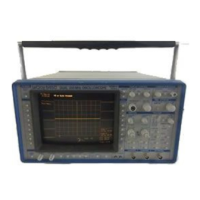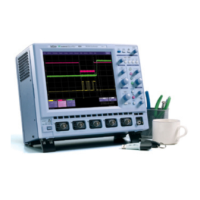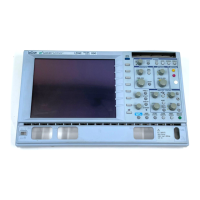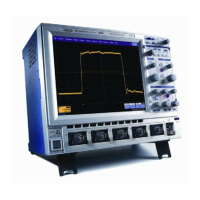If the host computer executes a Serial Poll at this moment, the binary
value Iii00000 (= E0 in hexadecimal) is read, i.e. the MESSAGE READY
bit from the previous command "TIME/DIV?" and the ERROR bit + RQS bit
from the command "AAA?" are set. Upon the execution of the Serial Poll,
these bits are reset. Since no DIFFERENT bit, capable of setting RQS,
was generated in the intervening time, no more Service Requests are
generated. If the host computer reads the ERROR byte (STB 6) with the
command "STB 6,?", it will receive the value 40, corresponding to the
second error. Thus, if several errors occur before the host computer
responds, only the last error is retained by the 9400A.
7.11.2 Service Request in RS-232-C
The Service Request must be simulated on a RS-232-C connection, since
it is not predefined. On the 9400A, the RS-232-C Service Request
consists of i to 3 characters, followed by the RS-232-C version of
<END> (as defined by the command RS CONF in Section 7.6.10, default is
CR), sent by the 9400A to the host -computer. It is the responsibility
of the programs on the host computer to recognize them. By default,
they consist of 1 bell character (binary value 7).
Since transfers over RS-232-C can only be in ASCII, the bell character
is rather easily recognized as a special message. Also, the user may
redefine the SRQ characters to some other sequence with the command
"RS SRQ". The Serial Poll does not exist on an RS-232-C connection
either. The only way to get more information about the status of the
9400A, or the reasons for an "interrupt", is to read the value of STB i
or the other status bytes.
Of course, the user always has the choice of working without any
Service Requests by "polling" the Main Status Byte (STB I) with the
command "STB I,?" (See Section 7.6.8).
Example:
MASK 1,40
MASK 4,6
MASK 6,1
Sets the mask of the Main Status
binary value 00101000, allowing
INTERNAL STATE CHANGE to generate
generate a service request.
Byte (STB I) to the
the ERROR bit or the
an RQS bit, i.e. to
Sets the mask of the INTERNAL STATE byte (STB 4) to the
binary value 00000110, i.e. it demasks the 2 overload
bits. If an overload occurs, the mask now allows the
propagation of the bit to the INTERNAL STATE CHANGE bit of
STB i.
Sets the ERROR byte (STB 6) to a non-zero value, allowing
the propagation of errors to the ERROR bit of STB i.
7-55
Remote Operations

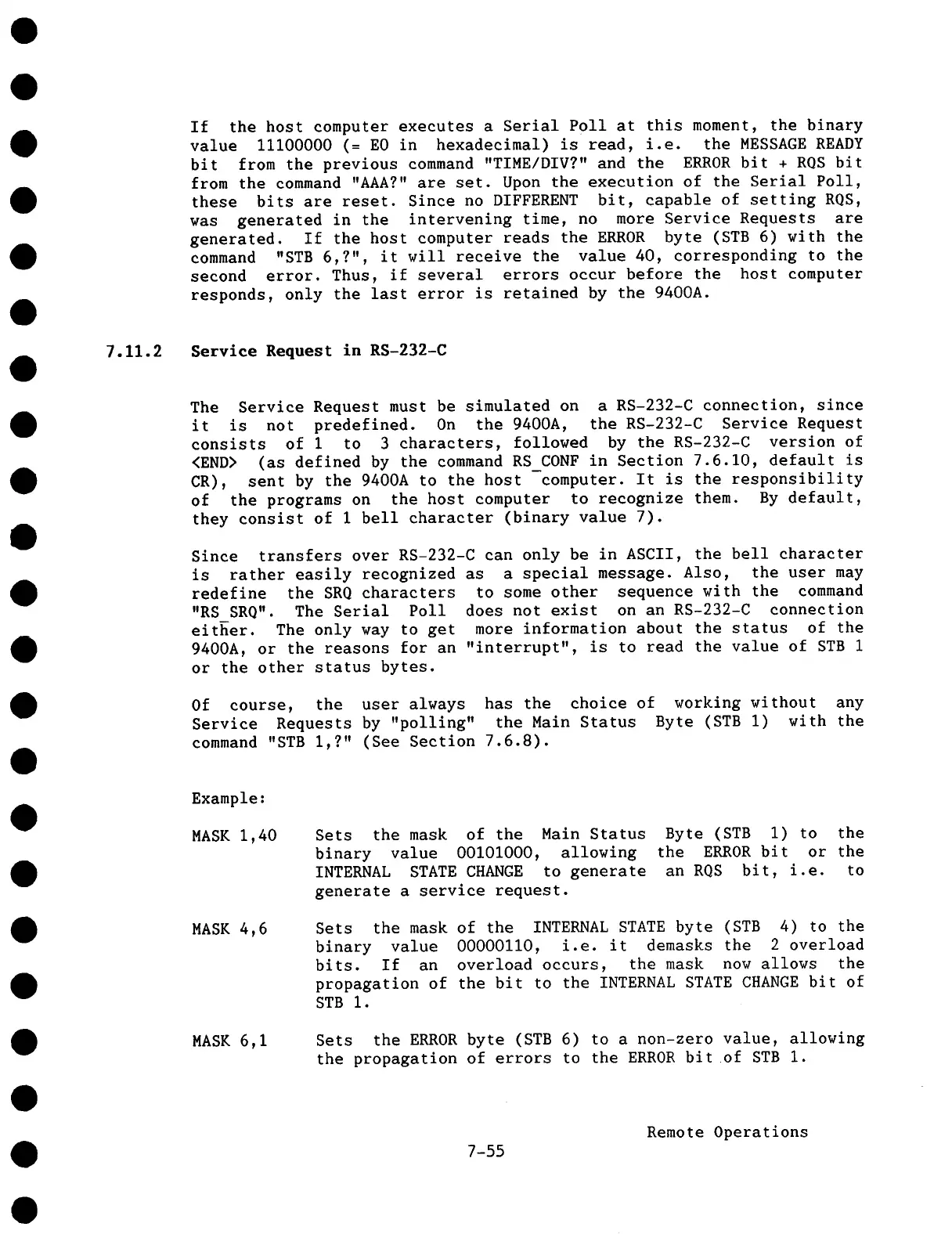